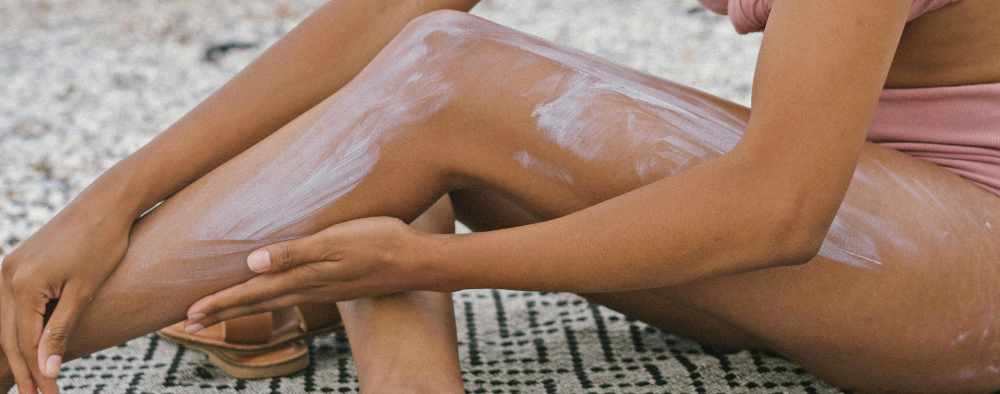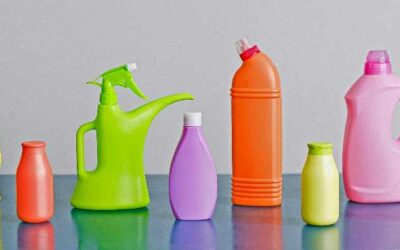by Susan Stamper •
Content Marketing Manager, ChiroHealthUSA •
If you’re from anywhere in the South right now, bless your heart — you’re probably feeling the heat so thick you could cut it with a butter knife. And most parts of the country are not much better. So, what do we do when the mercury rises like biscuits in the oven? We head for the water — pools, ponds, water parks, rivers, creeks, slip-n-slides in the backyard, you name it. We’ve all been there: slathering on sunscreen while yellin’ at the kids to stay where we can see ‘em and trying not to blind ourselves with sweat in our eyes. But hang on a hot minute… that sunscreen — the stuff we’ve trusted for years — is it as safe as we think?
There’s been some talk lately about certain sunscreens containing ingredients that might do more harm than good. Words such as “cancer-causing” get thrown around, and suddenly your go-to sun protection doesn’t seem so harmless anymore.
So, what’s true, what’s hype, and how we can protect our skin without worrying ourselves sick? 🌞
Sunscreen: Our Summer Sidekick
First off, let’s make one thing clear: sunscreen is important. According to the Skin Cancer Foundation, more than 1 in 5 Americans will develop skin cancer by the age of 70, and daily use of SPF 15 sunscreen can reduce the risk of developing squamous cell carcinoma by about 40% and melanoma by 50%. That’s not nothing.
But, not all sunscreens are created equal. Some of them contain chemicals that have raised more than a few eyebrows in the medical and environmental communities.
The Great Ingredient Debate
Let’s start with some buzzwords: oxybenzone, octinoxate, and benzene.
- Oxybenzone and Octinoxate are chemical filters used to absorb UV rays. They’re found in many traditional sunscreens, especially the spray-on kind folks love for convenience. But here’s the kicker — research has shown these chemicals can seep into the bloodstream. One study by the FDA found measurable amounts in the blood after just one use, and levels increased with continued use.
Now, that doesn’t automatically mean they’re harmful, but it does raise concerns. Some studies link these chemicals to hormone disruption and allergic reactions. Plus, they’re harmful to marine life. That’s why places like Hawaii have banned sunscreens with these ingredients to protect coral reefs. 🐠 - Benzene is a whole other can of worms. It’s a known carcinogen, and back in 2021, Johnson & Johnson had to recall several aerosol sunscreens due to benzene contamination. Harvard Health reports that while benzene shouldn’t be in sunscreen at all, contamination during manufacturing is the culprit. Companies are now under the microscope to keep their production clean as a whistle.
Mineral vs. Chemical Sunscreen: The Southern Showdown
Alright, so now that we know some sunscreens might be stirring the pot, what’s the alternative?
Meet mineral sunscreens — sometimes called physical sunscreens. These contain ingredients such as zinc oxide or titanium dioxide, which sit on top of your skin reflecting UV rays away.
According to the Cleveland Clinic and Yale Medicine, mineral sunscreens are considered safer for both people and the environment. They don’t seep into your bloodstream like chemical filters might, and they’re gentle enough for babies, folks with sensitive skin, and even your grandma with rosacea.
They can leave a white cast — especially if you’ve got a darker complexion — but newer formulations are working on that. In the meantime, a little rubbing goes a long way.
Spray Sunscreen: Convenience or Catastrophe?
Spray sunscreens are the darlin’ of busy mamas and squirmy kids. But are they really worth it?
Well, Harvard Health says they’re not always as effective as lotion-based sunscreens. People tend to miss spots, and the fine mist can blow away in the wind (or into your eyes — whew!). Not to mention, there’s a risk of inhaling the stuff, which isn’t exactly a breath of fresh air.
So, if you’re going to use a spray, make sure to spray it into your hands first, then rub it on — or better yet, stick to lotion for thorough coverage.
How to Choose a Safer Sunscreen (Without Losing Your Mind)
Let’s break it down. When you’re standing in the sunscreen aisle with sweat on your brow and kids begging for push pops, here’s what to look for:
✅ Broad-spectrum protection (UVA and UVB)
✅ SPF 30 or higher
✅ Water-resistant
✅ Active ingredients: zinc oxide or titanium dioxide
🚫 Avoid: oxybenzone, octinoxate, and aerosol sprays when possible
Pro tip: The Environmental Working Group (EWG) publishes a sunscreen guide every year to help you choose.
Sun Safety Tips That’d Make Your Grandma Proud
Sunscreen is only one part of staying sun-safe. Here are a few other tips.
☀️Seek shade: especially between 10 AM and 4 PM. That’s when the sun’s at its most damaging.
👒 Wear protective clothing: Long sleeves, wide-brim hats, and sunglasses aren’t just fashionable — they’re functional.
🥤 Stay hydrated: If you’re sweating like a sinner in church, you’d better be sipping plenty of water.
🕶️ Reapply, y’all! Sunscreen wears off, especially after swimming, sweating, or toweling off. Set a timer if you have to.
Final Thoughts: Keep the Sunshine, Skip the Risk
Listen — we’re not trying to scare you. We just want you to enjoy every ounce of this summer without sacrificing your health. Whether you’re floatin’ the river, grillin’ out with the cousins, or just sittin’ on the porch with a popsicle, make sunscreen a part of your routine — just choose wisely.
Stay safe, stay cool, and don’t forget to check your back for those sneaky spots — or better yet, make it a date and let someone check for ya. 😉
Sources:
- Skin Cancer Foundation. (n.d.). Sunscreen Safety: Separating fact from fiction. https://www.skincancer.org/blog/sunscreen-safety/
- Yale Medicine. (n.d.). Is sunscreen safe? https://www.yalemedicine.org/news/is-sunscreen-safe
- The Guardian. (2024, June 12). What is the safest sunscreen to use? https://www.theguardian.com/wellness/article/2024/jun/12/safest-sunscreen-to-use
- National Park Service. (n.d.). Sunscreen and the environment. https://www.nps.gov/subjects/oceans/sunscreen.htm
- Harvard Health Publishing. (n.d.). Sunscreen makers withdraw products found to contain cancer-causing substance. https://www.health.harvard.edu/staying-healthy/sunscreen-makers-withdraw-products-found-to-contain-cancer-causing-substance
- Harvard Health Publishing. (n.d.). Does spray-on sunscreen work as well as lotion? https://www.health.harvard.edu/staying-healthy/does-spray-on-sunscreen-work-as-well-as-lotion
- Cleveland Clinic. (n.d.). Is sunscreen bad for you? https://health.clevelandclinic.org/is-sunscreen-bad-for-you








